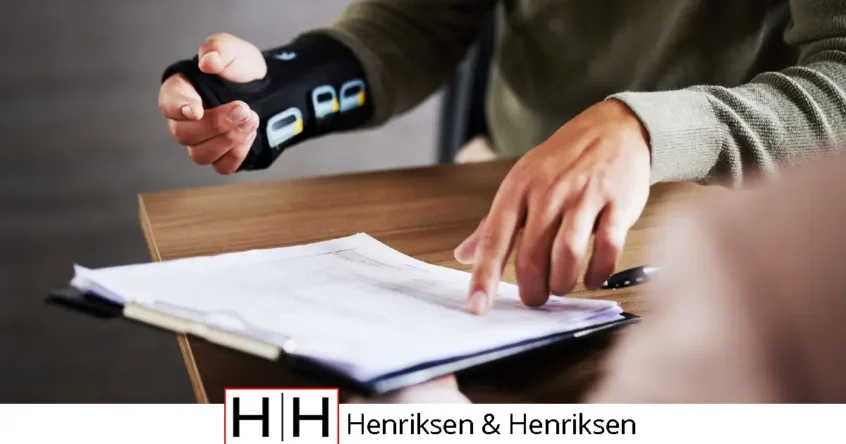How Do You Prove Negligence in a Slip and Fall Accident

Most of us have taken a fall at some point.
Some falls are just unfortunate, but others happen because of unsafe, preventable conditions. When that’s the case, the owner of the property where you fell may be responsible for your injuries.
Serious slip and fall accidents can lead to life-changing injuries and hefty medical bills. According to the National Safety Council, the average slip and fall claim can cost $51,047.
However, proving slip and fall negligence is not as simple as pointing fingers. You need strong evidence, a clear strategy, and an understanding of the law to hold the property owner accountable.
In this guide, we’ll walk you through how to sue for slip and fall negligence—step by step. Let’s get started.
What Is Negligence in Slip and Fall Cases?
Negligence is when someone fails to act reasonably to prevent harm. In a slip and fall negligence case, this comes down to whether the property owner (or the person responsible for maintaining the property) was careless. For example:
- Did they know about the hazard and fail to fix it?
- Should they have known about the hazard and taken action?
Negligence isn’t automatic just because you got hurt. You have to prove that the property owner didn’t do what a reasonable person would have done in their position.
The Four Elements of Negligence
To prove negligence, there are four key things you need to establish.
Duty of Care
The property owner had a duty to keep their space reasonably safe. For example, a grocery store has a responsibility to clean up spills in the aisles because they invite customers onto the property.
Breach of Duty
A breach of duty means the property owner failed to meet their responsibility. Maybe they ignored a broken step, left ice untreated, or didn’t clean up that spill we mentioned earlier.
Causation
You need to show that their failure directly caused your accident. If you tripped over your untied shoelace, the store’s negligence isn’t the issue. But if you slipped on a wet floor with no warning sign, causation is much easier to establish.
Damages
Establishing damages is about proving you were harmed. Medical bills, lost wages, and pain and suffering are all examples of damages. Without these, there’s no case—even if the property owner was careless.
Gathering Evidence: The Key to Proving Your Case
Evidence is the backbone of any slip and fall negligence case. The more you can gather, the better your chances of proving negligence.
Photos and Videos
Take pictures or videos of the accident scene as soon as possible. Capture the hazard that caused your fall, be it a puddle, uneven flooring, or poor lighting. Don’t forget to include context—show the area around the hazard to highlight its impact.
Witness Statements
If anyone saw your fall, get their contact information. Witnesses can describe what happened and confirm the unsafe conditions. Their statements can carry a lot of weight in your case.
Accident Reports
If you fell at a business, report it to a manager immediately. Ask for a copy of the accident report or take notes on what you told them. Doing this creates a record that can be used later.
Medical Records
Seek medical attention immediately, even if your injuries seem minor. Medical records provide clear proof of the harm you suffered and link it directly to the accident. Skipping this step could weaken your case, as the property owner may argue that your injuries weren’t severe enough to justify compensation.
Surveillance Footage
Many businesses have security cameras, and if your fall was recorded, that footage can be a game-changer. Request a copy as soon as possible before it’s deleted or overwritten. Video evidence is one of the strongest tools you can have to back up your claim.
Proving the Hazard Was Known (or Should Have Been Known)
One of the biggest challenges in a slip and fall case is showing that the property owner knew—or should have known—about the hazard.
Actual Knowledge
When we say actual knowledge, we mean the owner knew about the danger but didn’t act. For example, if employees at a store noticed a leaking freezer but didn’t clean it up, they had actual knowledge of the hazard.
Constructive Knowledge
In contrast, constructive knowledge suggests the property owner should have known about the hazard because it existed long enough that a reasonable person would have noticed and addressed it.
How to Prove the Owner’s Knowledge
Evidence is key in proving the owner either knew—or should have known—about the hazard. Some of the strongest proof includes:
- Maintenance Records & Inspection Logs – If the business keeps track of cleaning and repairs, gaps in these records can indicate negligence.
- Employee Testimony – If workers admit they saw the hazard but didn’t act, this can be strong evidence.
- Security Camera Footage – Video evidence showing how long the hazard was present before your fall.
- Customer Complaints or Reports – If other people reported the danger before your accident, that can show the owner was aware.
Common Defenses and How to Counter Them
Property owners and their insurance companies often push back on slip-and-fall negligence settlements. Here are some common defenses they use—and how you can respond.
You Were Careless
One of the most common arguments is that you weren’t paying attention. The owner might say you were distracted by your phone, rushing, or otherwise not watching where you were going.
Shift the focus to the hazard itself. If the condition was dangerous enough that a reasonable person could have fallen, it doesn’t matter if you glanced at your phone for a second.
The Hazard Was Obvious
If the hazard was something clearly visible, like a big puddle or a hole in plain sight, they might argue you should have avoided it. In this case, photos of poor lighting, distractions, or other factors can help prove the hazard wasn’t as obvious as they claim.
The Hazard Was Temporary
Property owners may argue that they didn’t have enough time to fix the problem. For example, if it started raining 10 minutes before you fell on a wet floor, they’ll say they didn’t have a chance to put up warning signs.
You can counter this by pointing to their overall safety practices—did they have a plan for situations like this?
The Role of Modified Comparative Negligence
In some states like Utah, the concept of modified comparative negligence comes into play. Under this guideline, your compensation will be reduced by your percentage of fault if you’re partially responsible for your accident.
However, there’s a 50% bar rule—if you are more than 50% at fault, you won’t receive any compensation at all.
How It Works in Utah
- If the court finds you 20% at fault and your total damages are $10,000, your payout would be reduced by 20%, leaving you with $8,000.
- If you are 40% at fault and your damages are $50,000, your compensation would be reduced to $30,000.
- If you are 51% or more at fault, you won’t recover anything, no matter how severe your injuries are.
Insurance companies and property owners often try to shift as much blame onto you as possible. If they can push your level of fault past 50%, they avoid paying anything. You need strong evidence- and an experienced slip and fall attorney– to fight for the compensation you deserve.
Over to You
Most premises liability cases settle out of court, but if the insurance company refuses to offer fair compensation, taking the case to trial might be the only option. If that happens, working with a competent lawyer can help you present strong evidence and seek justice.
At Henriksen & Henriksen, we know how to prove negligence and fight back against unfair blame. Whether through a settlement or trial, we’ll stand by your side every step of the way.
Call us today for a free consultation and let’s talk about your case.
